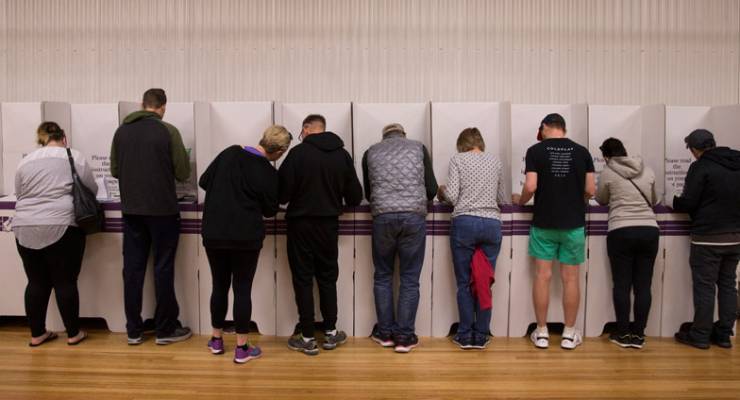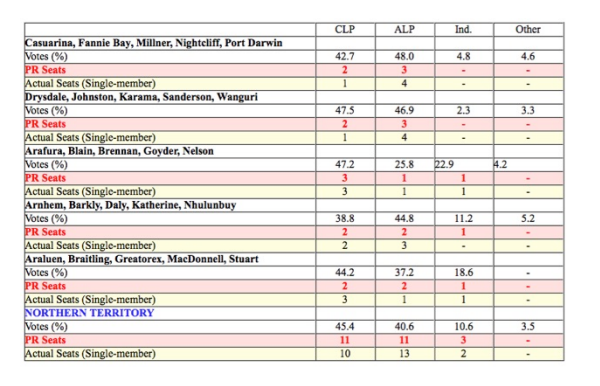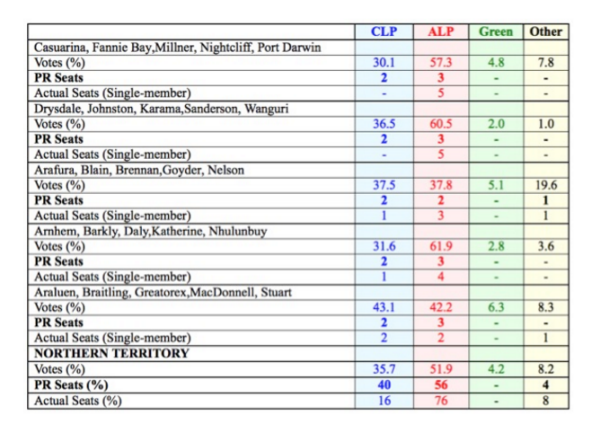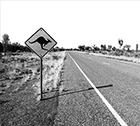
There is much to like about living in the Northern Territory. I wouldn’t have hung around here for 30 or more years if not. But there is much that is seriously wrong about this place as well.
Not least, as my colleague Ken Parish pointed out here last week, in the way we govern ourselves. It is difficult to fault Ken’s assessment that the blame lies with the Territory’s foundational structures:
“… the Commonwealth imposed an inappropriate model of self-government in 1978 (the Northern Territory (Self-Government) Act for a polity of the Territory’s size and stage of development, a model that entrenches single member electorates, prohibits the co-opting of ministerial talent from outside the Parliament, lacks inbuilt accountability checks and balances, and largely ignores the key fact that Aboriginal people constitute one-third of the population, own half of the land and have a culture and material needs and aspirations that differ radically from those of the majority non-Aboriginal population.”
Evidence of the systemic failures in the NT electoral system can be found — as Ken Parish usefully sets out in his piece — in the skewed results of what elsewhere in the country (and beyond) might be viewed as election outcomes within a normal range. Explicit in Ken’s analysis is our failure to provide an equitable and appropriate electoral system for the NT.
Drawing on the examples of the other two small Australian jurisdictions — Tasmania and the Australian Capital Territory — Ken notes the value and suitability of the “multi-member electorates with MLAs elected by Hare-Clark proportional representation” that both have adopted, noting the electoral system applied in those jurisdictions:
“… not only enhances diversity of political representation and encourages mature deliberation and constructive compromise, it also ensures significant continuity and stability of representation for the major parties (albeit at the price of seldom achieving the sort of complete single party domination aka elected dictatorship that the NT ALP will now enjoy for the next four years).”
Four NT election results — skewed in terms of seats won against proportion of votes received — suffice to illustrate the argument for proportional representation in the NT.
In the NT general election of 1974 — the first for a 19-seat Legislative Assembly but before “full” self-government in 1978 — the Country Liberal Party (a recent shotgun marriage of the local Country and Liberal parties) won 49.01% of the vote, the Australian Labor Party won 30.46% and independent candidates won 20.54%. The CLP took 17 seats, the ALP none and two independents won seats.
In the 2001 election, which Labor won after 27 years in the wilderness of opposition, Labor — now in a 25-seat assembly — won 13 seats to the CLP’s 10 with independents taking the remaining two seats. But the CLP led Labor on both first-preference votes (45.38 to 40.60%) and two-party preferences (51.9 to 48.1%).
It is useful to see how the application of a different electoral system would — or could — have changed this result. The good folks at the Proportional Representation Society of Australia (the PRSA) conducted an analysis of the 2001 election, noting that:
“To simulate what might have happened under quota-preferential proportional representation, the PRSA grouped the twenty-five single-member electorates into five, with each returning five members. The CLP and Labor would both definitely have won eleven seats. The election of three Independents would have been quite likely, though in one case it is possible the vote away from the major parties would not have adhered, and Labor would then have picked up a twelfth seat.”

Table source: PRSA, 2001.
The results in the 2005 NT general election were even more stark and distorted. Labor, winning 19 seats out of 25 in the assembly, took a very heavy toll on a dysfunctional CLP very much unused to life in opposition, gaining only 4 seats with the remaining seats going to independents. Clare Martin’s Labor government increased its vote by over 11% to 51.9% while the Country Liberal Party fell from 45.4% to 35.7%.
Again, application of a proportional representation analysis would have provided a very different result, as shown with this PRSA table, with Labor taking 14 seats, the CLP 10 and independents one.

Table source: PRSA, 2005.
All of the election results examined above reveal the truth of the “extraordinary volatility” in NT electorates that Ken Parish says “regularly results in an Opposition too weak numerically to provide effective opposition and therefore hold the government to account” and result in an “artificially attenuated” opposition.
But none of those election results hold this as true as does the August 2016 NT general election. That the CLP, as led by Adam Giles, deserved a thrashing is without doubt; Giles lost his own seat of Braitling in suburban Alice Springs, and the CLP’s parliamentary wing was reduced to a rump of two seats, with independents taking the remainder. In a cruel twist of electoral and legal fate, the remaining CLP MLAs — Gary Higgins from the rural seat of Daly and Lia Finocchiaro in the newly created Darwin suburban seat of Spillett — were obliged to form the Labor government’s loyal opposition.
Higgins, as opposition leader, has taken on the portfolios of Treasury, Aboriginal Affairs, Infrastructure, Housing, Tourism, Environment, Public Employment and Corporate and Information Services. Finocchiaro, as deputy opposition leader, takes on the role of shadow attorney-general (she is a trained lawyer), opposition whip (that will be a breeze), Justice, Police, Fire and Emergency Services, Trade and business, Health, Education, Primary industries and resources, Northern Australia, Essential services, Territory families and Children.
Welcome to politics as farce.
I’ll leave discussion about the relative merits — or not — of proportional representation as a model for future NT elections for your comments and the much-needed and inevitable debate that will occur–or we’ll be damned to repeat past failures if it doesn’t — about how the NT governs itself. There is little doubt that the NT electoral system is broken.
The bigger question is how we fix it.
Discuss.
*This article was originally published at The Northern Myth








Crikey is committed to hosting lively discussions. Help us keep the conversation useful, interesting and welcoming. We aim to publish comments quickly in the interest of promoting robust conversation, but we’re a small team and we deploy filters to protect against legal risk. Occasionally your comment may be held up while we review, but we’re working as fast as we can to keep the conversation rolling.
The Crikey comment section is members-only content. Please subscribe to leave a comment.
The Crikey comment section is members-only content. Please login to leave a comment.